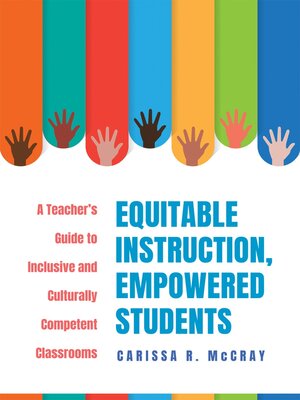Equitable Instruction, Empowered Students
ebook ∣ A Teacher's Guide to Inclusive and Culturally Competent Classrooms (Create an equitable instruction classroom culture that encourages equity and justice.)
By Carissa R. McCray

Sign up to save your library
With an OverDrive account, you can save your favorite libraries for at-a-glance information about availability. Find out more about OverDrive accounts.
Find this title in Libby, the library reading app by OverDrive.



Search for a digital library with this title
Title found at these libraries:
| Library Name | Distance |
|---|---|
| Loading... |
Learn practical strategies for ensuring each of your students feels valued, welcomed, and empowered. Author Carissa McCray provides the tools to combat biases inherent in education with pedagogy that encourages students to dismantle the injustices surrounding them. Tackling every angle of the classroom, from instructional practices and curriculum to classroom culture and communication, the book provides opportunities for reflection and inspires readers to ignite change.
This book will build pedagogical and communication skills to:
Contents:
Introduction
Part 1: Building a Culture of Opportunity
Chapter 1: Becoming Culturally Competent
Chapter 2: Expanding Curriculum Culture
Chapter 3: Shaping Classroom Culture
Part 2: Speaking the Language of Freedom
Chapter 4: Articulating Your Purpose, Vision, and Mission
Chapter 5: Communicating With Students
Chapter 6: Engaging With Families
Part 3: Assessing at Cultural Intersections
Chapter 7: Understanding Intersectionality
Chapter 8: Diversifying Assessments
Chapter 9: Committing to Reflection, Professional Development, and Modification
Conclusion
References and Resources
Index







